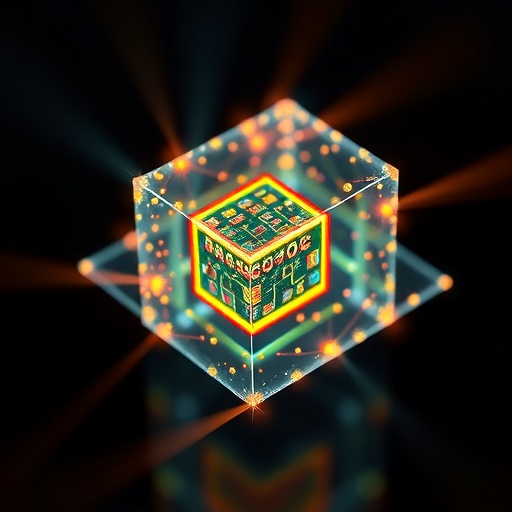The text you’ve presented provides a comprehensive overview of the current state and challenges of multidimensional photodetectors, especially those based on two-dimensional (2D) quantum materials. Here’s a concise summary and analysis highlighting the key points, technological challenges, and future directions:
Summary of Key Points
1. Current Limitations and Dimensionality Constraints:
Existing multidimensional composite detectors are limited mostly to resolving only three dimensions, typically power (intensity), spectrum, and polarization.
Extending capabilities to higher dimensions requires leveraging nonlinear optical properties of 2D materials and advanced sub-pixel stacking designs.
The interpretation of highly complex composite outputs demands the use of sophisticated neural networks for learning unknown mappings and data reconstruction.
2. Detector Types and Maturity:
Single-dimensional multivariate detectors (e.g., spectral, polarization, or motion detectors) are more mature, leveraging existing technologies; their system design is simpler and more optimized.
Multidimensional multivariate detectors remain an emerging frontier, necessitating complex synchronization and multimodal data fusion. These face challenges due to complexity and processing demands.
3. Physical Mechanisms and Materials:
Four primary mechanisms enable multidimensional detection: optical scattering, vector photocurrent metasurfaces, back-to-back heterojunctions, and twisted-angle 2D heterostructures.
Emerging physical phenomena in 2D materials like Moiré photonic crystals, valleytronic Hall effect, and asymmetric band absorption offer promising new ways to enhance multidimensional detection.
Materials such as graphene, black phosphorus (BP), topological insulators, and TMDs (e.g., MoS₂) serve as the backbone for current detector designs, each with unique advantages and limitations.
4. Integration and Fabrication Challenges:
Compactness of 2D materials is ideal for on-chip integration, crucial for future unified detection and processing platforms.
Large-area fabrication of 2D materials like graphene and MoS₂ by CVD/MOCVD is advancing but metasurface fabrication remains costly and difficult due to precision requirements.
Twist angle control in heterostructures is a technical bottleneck for scaling and reproducibility.
Integration with mainstream CMOS technology is limited by thermal budget constraints (BEOL typically limits processing to below 400 °C, while 2D material growth requires 800–1000 °C).
5. Stability and Environmental Sensitivity:
Many 2D materials are sensitive to oxygen and moisture causing performance degradation over time through doping, scattering, or phase changes.
Advanced encapsulation methods (e.g., hBN encapsulation, laser sulfidation, self-assembled monolayers) are employed to improve device longevity.
Full industrial-grade stability, especially for sensitive materials like BP, remains an open challenge.
6. Dimensional Parameter Requirements and Trade-offs:
Detection complexity increases substantially with dimensionality:
Intensity detection requires one parameter,
Full-Stokes polarization needs four parameters,
Full spectral detection requires around five parameters,
Thus, a 3D detector integrating all three dimensions demands about ten input parameters, posing significant measurement and design complexity.
There is a necessary trade-off between spatial resolution, temporal response, and dimensional accuracy.
Future enhancements could come from electrical modulation, structural optimizations, novel physics, and AI algorithms.
Future Research Directions and Recommendations
Advanced Physical Mechanisms: Exploit new quantum effects in 2D materials and heterostructures, including Moiré patterns, valleytronics, and asymmetric absorption to enable richer dimensional detection.
AI-Assisted Reconstruction: Develop neural network models to decode complex nonlinear detector output signals into precise multi-dimensional physical information.
Environmental Stability: Focus on cross-scale solutions from atomic defect engineering to advanced packaging techniques for robust operation in ambient conditions.
Large-Area Fabrication & CMOS Integration: Innovate fabrication architectures that allow precise, scalable metasurface production and harmonize growth temperatures/process steps with CMOS back-end limits.
Parameter Limits and Systems Design: Quantify the fundamental upper and lower limits for multidimensional detection parameters, enabling optimized trade-offs in practical detectors.
Multimodal Fusion & Synchronization: Enhance integration capabilities for multimodal fusion devices balancing complexity and robustness for real-world applications.
Conclusion
The current state of multidimensional photodetection is at a critical boundary where mature single-dimension detectors exist, but comprehensive multidimensional systems require breakthroughs in materials science, fabrication, device architecture, and computational data processing. The combination of nonlinear optical phenomena in 2D quantum materials with cutting-edge stacking techniques and AI promise a promising path forward. However, significant challenges remain in parameter handling complexity, environmental robustness, thermal process compatibility, and large-area manufacturability.
Researchers and engineers should adopt a holistic approach that integrates material innovation, device engineering, and computation to realize practical, high-performance multidimensional photodetectors tailored for the demands of future optical sensing, communication, and imaging technologies.
If you want, I can also help draft potential targeted research proposals, development roadmaps, or identify specific materials or device architectures suitable for particular multidimensional detection applications. Just let me know!
Tags: asymmetric band absorptionMoiré photonic crystalsmultivariate detection technologiesneural networks for data reconstructionnext-gen multidimensional photodetectorsnonlinear optical propertiesoptical scattering mechanismssub-pixel stacking designstwisted-angle 2D heterostructurestwo-dimensional quantum materialsvalleytronic Hall effectvector photocurrent metasurfaces





